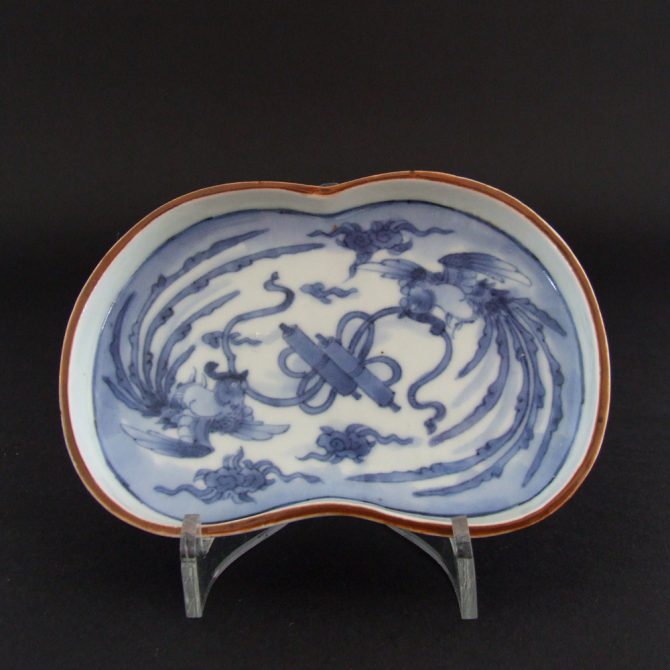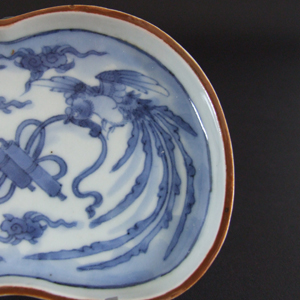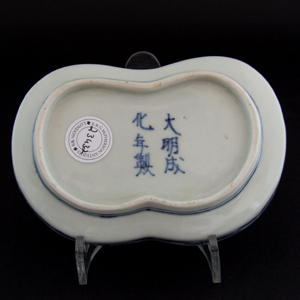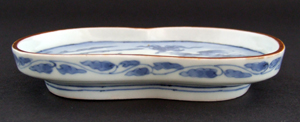
ARITA c.1680 – 1700 Japanese Porcelain
A 17th Century Japanese Blue and White Porcelain Dish, Arita Kilns c.1680-1700. The Asymmetric Form is Well Painted with Two Phoenix (Hō-ō Bird) Set Against a Pale Blue Wash, Their Beaks Clasped on a Ribbon Attached to a Pair of Scrolls. The Rim with a Brown Kuchibeni (Literally Meaning `Lipstick`) Iron-Oxide Dressing. The Base with a Four Character Chenghua Mark (Ming Dynasty 1465-1487). This Dish was Undoubtedly Made for the Domestic Market.
SOLD
- Condition
- In perfect condition.
- Size
- Length : 11.7 cm (4 3/4 inches)
- Provenance
- N/A
- Stock number
- 23432
Information
Hō-ō Bird / Ho-Ho Bird :
The Japanese Ho-o bird is type of auspicious phoenix and is similar to the Chinese Fenghuang. the Hō-ō appears only in peaceful and prosperous times (nesting, it is said, in paulownia trees), and hides itself when there is trouble. As the herald of a new age, the Hō-ō descends from heaven to earth to do good deeds, and then it returns to its celestial abode to await a new era. It is both a symbol of peace (when the bird appears) and a symbol of disharmony (when the bird disappears). The Ho-o Bird appears frequently in Japanese porcelain of the late 17th and early 18th centuries, especially in Kakiemon wares. Ho-Ho is often used when referring to English porcelain versions of these Kakiemon designs.



